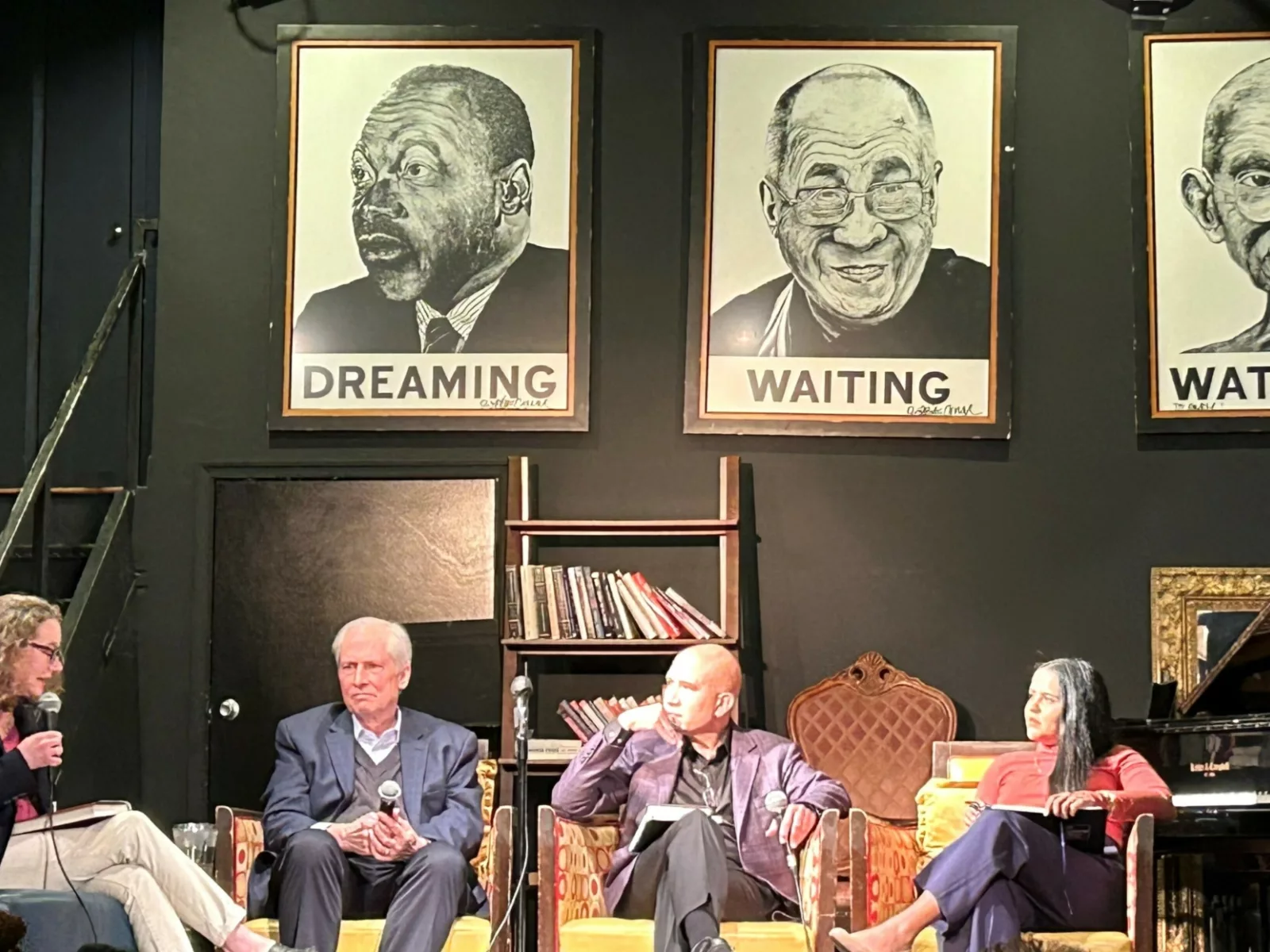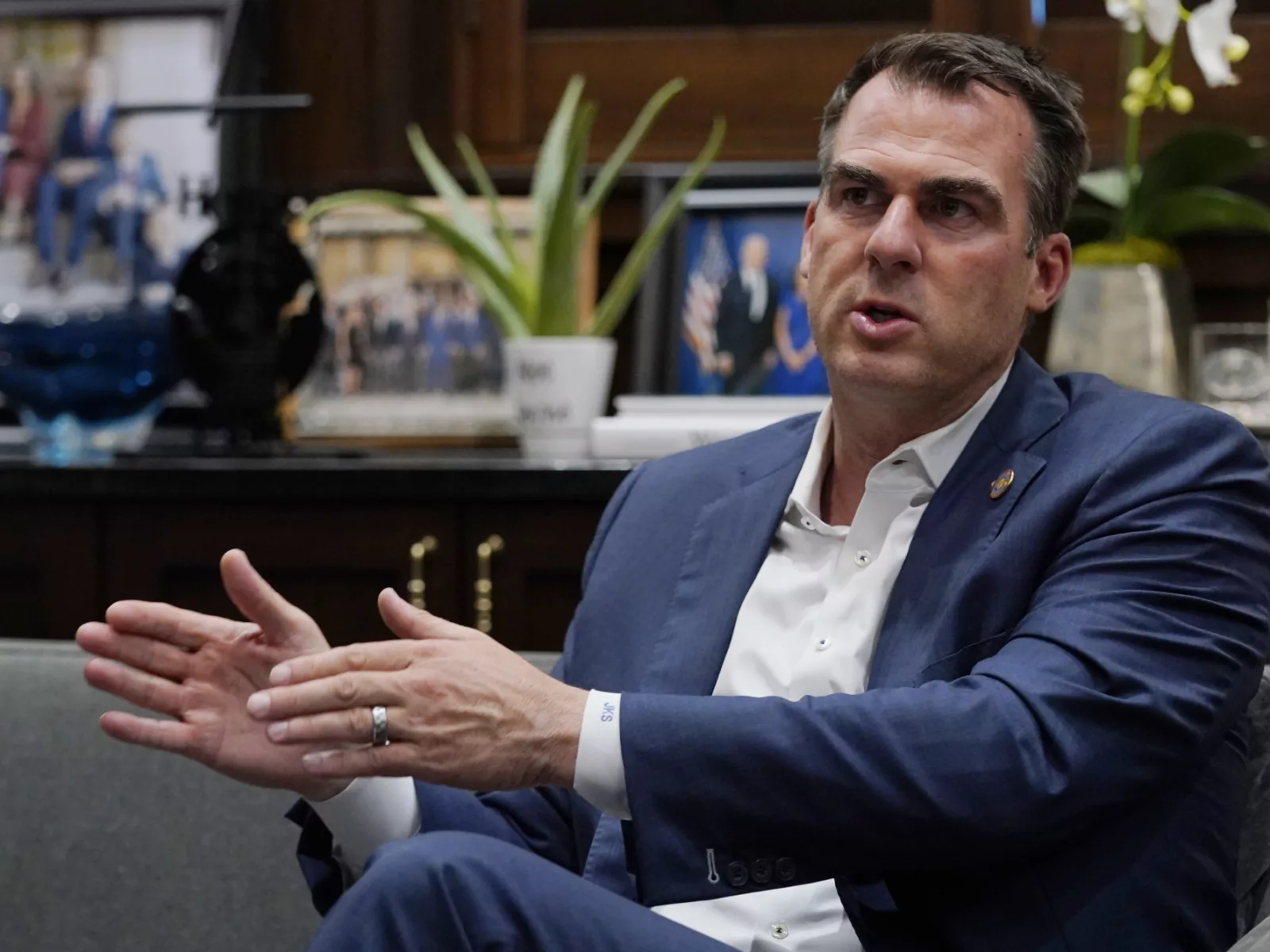In recent years, Oklahoma has been committed to providing second chances for people returning home from prison.
When Governor Kevin Stitt and First Lady Sarah Stitt entered the Oklahoma Governor’s Mansion in 2019, they quickly identified the state’s high incarceration rate as a major problem that needed to be addressed. With over 25,000 people behind bars, the state had the second highest imprisonment rate in the country. And around 1.2 million people — or more than one in every four Oklahomans — had a criminal record. For formerly incarcerated people, this presented significant barriers to rehabilitation, family cohesion, employment, and other basic needs, leading to cycles of recidivism and re-incarceration.
Over the subsequent years, Sarah Stitt has led the charge to ensure incarcerated and formerly incarcerated Oklahomans have a second chance to live fulfilling and productive lives. By supporting policy change and working directly with state organizations and businesses, she has helped create stronger pathways to housing, jobs, and services and has improved public safety in the process.
“Oklahoma has been at the cutting edge of giving people second chances,” says Alyson Clements, director of criminal justice advocacy for Arnold Ventures (AV). “The first lady has been working with organizations across the state to connect incarcerated people with resources and employment opportunities with the goal of setting them up for success as they reenter society.”
As part of Second Chance Month, AV sat down with Sarah Stitt to talk about her work to improve reentry and reduce recidivism in Oklahoma.

Arnold Ventures
You have been widely recognized for your involvement in reentry work. How and why did you become interested in that topic?

Sarah Stitt
I grew up in Oklahoma, and I have lived here my whole life. Oklahoma has the highest incarceration rates for women, with high rates of addiction, teen pregnancies, and other social and generational cycles. My own family was a part of those statistics. My parents met at a drug rehab. My dad worked there until I was around 16, did prison ministry, and counseled people coming out of prison and recovering from addiction. My whole community was people who had been touched by the justice system. As I got married and started my own family, I always felt a connection to that community. I was often tapped for resources on addiction recovery and jobs, and I recognized the problem of employment barriers for people coming out of the justice system.

Arnold Ventures
As you know, April is Second Chance Month. Why is it important to provide incarcerated and formerly incarcerated people a second chance?

Sarah Stitt
In Oklahoma, incarceration takes a toll on the economy, the school system, and every aspect of the state. When my husband decided to run for governor, he showed me a statistic that said Oklahoma incarcerates more women than anywhere in the world per capita. I was floored by that. We are incarcerating our mothers, our grandmothers. A lot of incarcerated women have been touched by the system since their teens. Most are not bad people. They come from cycles of trauma, abuse, and lack of resources. I wanted to make sure that Oklahomans have the right resources behind bars — and that they get a second chance when they get out — so they can change the trajectory of their lives.

Arnold Ventures
A few years ago, Oklahoma passed HB 1679, known as the Sarah Stitt Act. How does that legislation address the problems of reentry, and has it been successful?

Sarah Stitt
When my husband came into office, he decided to commute the sentences of people in Oklahoma who were incarcerated on low-level drug charges. I thought that was a fabulous idea, but we also needed a plan for their release. I learned that most people getting out did not have access to a state ID or driver’s license, a birth certificate, or social security information. These are major risks for falling back into the system.
With HB 1679, we ensure that in the six months before release, we help people to get their state ID, vocational training record, and social security card. We also offer them support and training behind bars so that they do not fall back into the same circumstances as before they were incarcerated. We began holding reentry fairs to offer housing, jobs, addiction recovery, and other services. I am proud to say that in the years since the commutation, our recidivism rate has gone from one of the highest in the nation to one of the lowest. We are helping people change the trajectory of their lives.

Arnold Ventures
You have also been involved in other initiatives aimed at improving outcomes for incarcerated and formerly incarcerated people. What are those efforts?

Sarah Stitt
I created my own organization, Hope Rising. We connect incarcerated and formerly incarcerated people with community nonprofits, faith-based organizations, and initiatives within state government that give people hope by helping them to articulate goals, exercise will power, and create new pathways for themselves. We collaborate with the Oklahoma Messages Project, which provides tablets to incarcerated women with children so they can participate in big life moments with their kids, like reading them bedtime stories, seeing them graduate from school, or being there for birthday parties. We are trying to help families stay connected. We also have amazing business partners who come to our reentry fairs to hire formerly incarcerated people — they train them, give them insurance, and pay them a fair wage. Often, it is the first time that these formerly incarcerated people have gainful employment and control over their lives.

Arnold Ventures
Are there any stories of reentry or rehabilitation that have particularly inspired you?

Sarah Stitt
About a month ago, I met a woman named Christie Luther. She has an incredible story. She is a beauty shop worker who was formerly incarcerated. When she was behind bars, she learned that there were lots of women inside who had started beauty school but never finished. So, when she got out, she formed a nonprofit called R.I.S.E. Program Inc., and she runs a full cosmetology licensing program in Mabel Bassett Correctional Center, a medium-security women’s facility. Through her program, incarcerated women get their cosmetology license, learn life skills, and get job placement on release. Out of all of the women who have gone through the program, not one has come back into the system. These are the kinds of stories that show how well it works when you give people hope, create pathways for them, and teach them life skills. More than that, Christie is connecting these women with a job and a community that supports them moving forward.

Arnold Ventures
In recent years, Oklahoma has gained a reputation for successfully balancing criminal justice reforms with public safety. How has your state been able to accomplish this, and what has the impact been for residents?

Sarah Stitt
A huge part of changing the dynamic is community members and businesses working with formerly incarcerated people instead of fearing them. I believe that is why Oklahoma has had such a drop in recidivism rates. Private businesses and nonprofits are standing together with people coming out of the justice system and giving them the skills to take their lives back. New policies are always going to face resistance. But this one has changed people’s lives for the better. I will be at a soccer game, and someone will come up to me and say, “My daughter or my son was a part of that commutation years ago. Now, they have a job. They have their kids back.” Those are the moments that make the challenges of being a state leader worthwhile.

Arnold Ventures
You often meet with elected officials in other states. Are you seeing interest in the types of reforms Oklahoma has enacted around reentry and second chances?

Sarah Stitt
I have met with many first spouses and legislators to talk about what has worked in Oklahoma. Sometimes it is an uphill battle because we are working against public fears about safety. But several other states have implemented similar laws that provide ID and other documents that remove barriers to successful reentry. We now have good data on the things that work. Recently, working with the National Governors Association, I held a convening for first spouses, and we focused on reentry and recidivism. I took the group to a women’s prison and highlighted our work. All of them recognized similar problems in their states. Most state leaders do not want to build more prisons. They want to figure out how to rehabilitate people and give them opportunities. So, I am finding that these conversations are more fruitful than they used to be, because people understand that there are some positive, easy lifts that can change the justice system and help people behind bars.




















